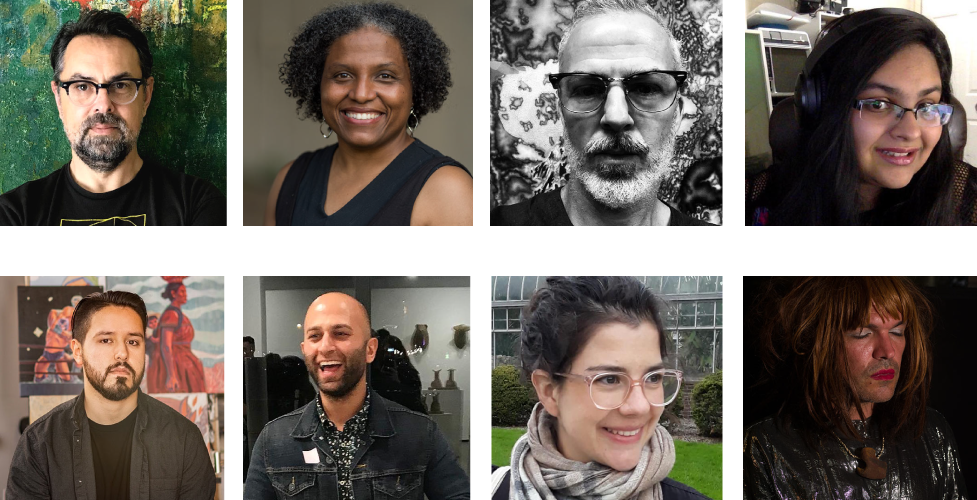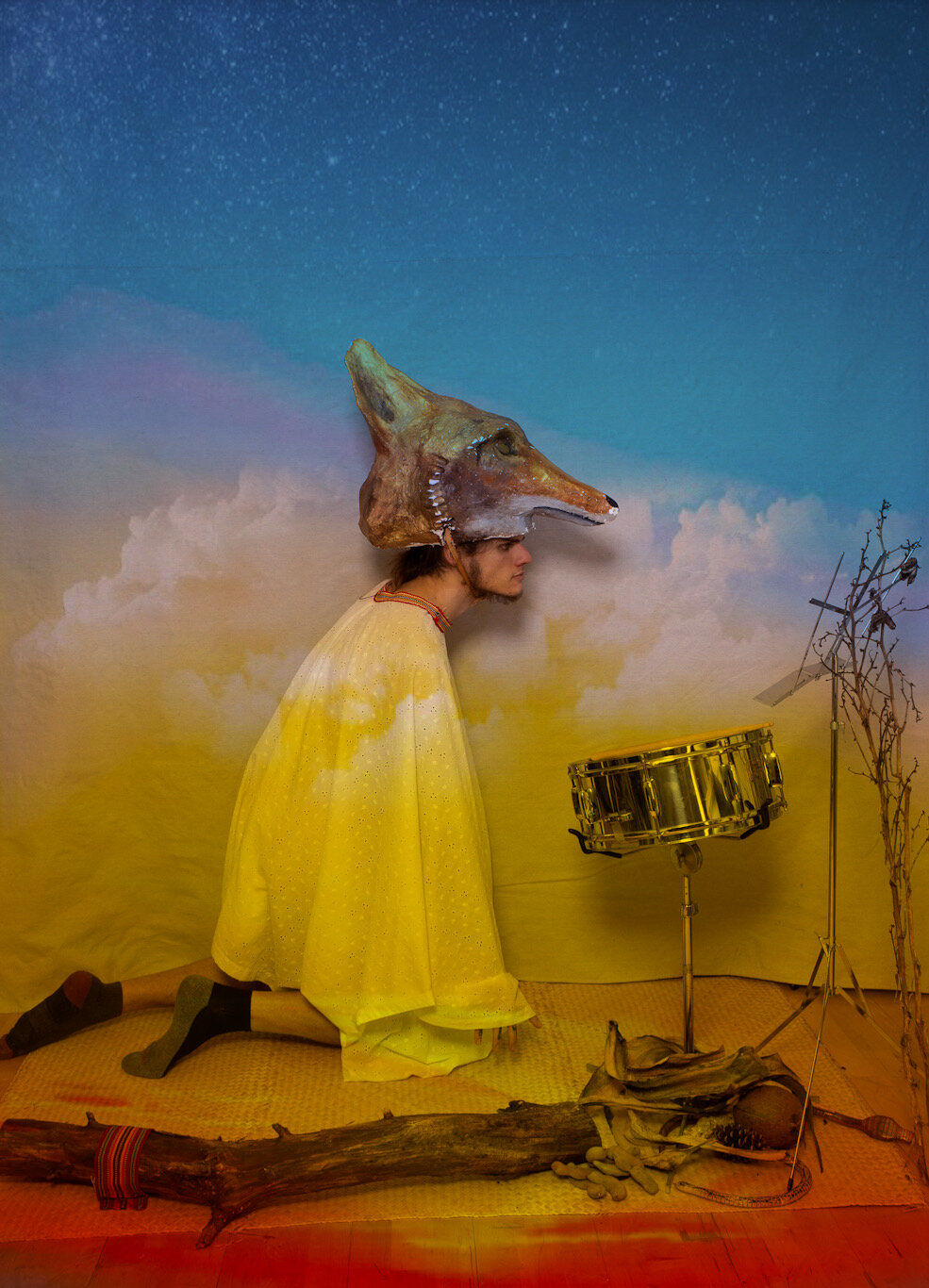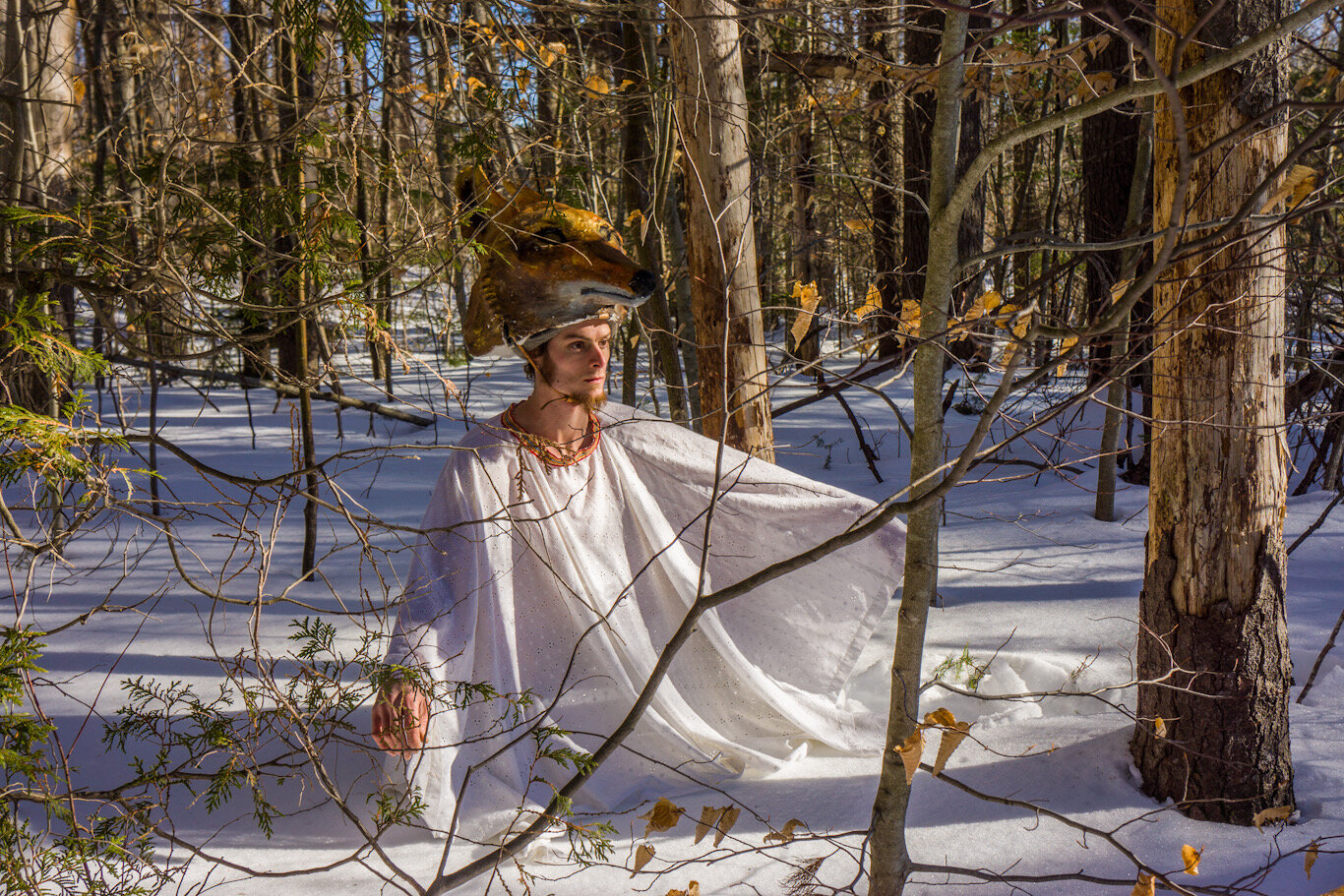
Detroit Public Library Online Gallery presents
Address Unknown:
An Incomplete Map of Belonging
Curated by Parisa Ghaderi
"The experience of immigration is one of transition between 'here,' 'there,' 'nowhere,' and 'everywhere'; A transition that can be called geography of belonging. An immigrant negotiates a sense of belonging through expressions of bilingualism and biculturalism in public and private spheres. This geography of belonging is characterized and colored with an ambiguous loss: a permanent and vague sense of grief and homesickness that cannot be easily detected when a migrant is 'naturalized.'
"An ambiguous loss is one that is partial, incomplete, disrupted, and extremely difficult to heal. Social rituals often help families remain connected and collected. However, migration disrupts these rituals as well. A map of belonging cannot be drawn unless these subjective elements of healing are recognized and located. This exhibition attempts to draw the geography of belonging in the work of immigrant artists in the metro Detroit area who have experienced the complexities of contemporary migration."
Artists biographies and artist statements.
Adrian Deva
Place 8
Oil, acrylic, crayon, and ink washes on canvas.
48 in x 60 in
2017-2020
This painting id from a series that explores the concept of home and place, a sort of genius loci, deconstructed in memory and reconstructed on canvas and assuming a form where drawing meets painting.
Alex Youkanna
Shine Bright
Clay, acrylic
Size varies
2019
$150 each
Reflect
Clay, acrylic
Size varies (no more than 12x12 inches)
2019
$250
Arturo Herrera
The National Bird a performance by Arturo Herrera
El Coyote: Juri Bizzotto
Video documentation by Furio Ganz and Valeria Segna filmed in January 2020 at Bosco dell'Osellino, Venice, Italy.
Emery Community Art Center, University of Maine at Farmington, The National Bird series, group show. Photo Essay Polaroid film, Studio set up, 2020.
Rosquillas de Sabanagrande,
Photo
2020
Flores de Izote, “Homenaje al pueblo más querido de mi abuelita, Sabanagrande” / "Tribute to my grandmother's most beloved town, Sabanagrande,” photo documentation.
Mixed media, 2020
Frida a warrior and defendant of de Los campos bananeros - slowly transforming into Toña,
Performance art. 2020
Ivan Montoya
Bailamos like the Ocelotl
30 in x 30 in
Acrylic, Gouache, latex paints
$1,400.00
“Ocelotl” refers to the jaguar, and is associated with the god Tezcatlipoca in mayan mythology. Tezcatlipoca was associated with ancestral memory and change brought about by conflict. The jaguar was believed to be able to traverse between day and night, spirit world and living world. Similarly, Immigrants navigate various social personas in order to adapt.
Jetshri Bhadviya
Her Magical Colors
44 in x 30 in
Archival Digital Inkjet Prints
2019
We are who we are because of what places we choose to associate with…
Her Passionate Colors
44 in x 30 in
Archival Digital Inkjet Prints
2019
The calm of a lake, the stubbornness of a mountain, the depth of an ocean, the anger of a storm are mirrors of one another, and reflective of our inner focus…
Her Majestic Colors
44 in x 30 in
Archival Digital Inkjet Prints
2019
We must know the landscape within us; dreams, images, intuitions, memories, wounds, sensitivities, feelings, and longings provide a panoply of psychic material affecting our moment-to-moment existence…
Her Intense Colors
44 in x 30 in
Archival Digital Inkjet Prints
2020
The geographical surroundings, psychological relationships, and spiritual traditions place great value on the deep interior of our lives, shaping the landscape within us…
Her Happy Colors
44”x 30”
Archival Digital Inkjet Prints
2019
Identity is a product of a wild alchemy, a blending of inner and outer landscapes, the most recessed and the most extended.
Her Envious Colors
44 in x 30 in
Archival Digital Inkjet Prints
2019
The inclusive reality of self and the world permeate one another, offering an ongoing exchange of dualities, where we connect to a category while denying the belonging to another…
Her Discouraging Colors
44 in x 30 in
Material is Archival Digital Inkjet Prints
2020
$700
Our inner life is a storehouse of wonder, beauty, magic, as well as a bit of mayhem, and is not separate from our external world, of everyday endurance and work, nor is it separate from clouds and rain, moonlight and birdsong…
Natalia Sarrazin
Sobremesa (Spoons)
8 in x 4 in (approx.)
Silver alloy, bee’s wax
2019
$420
Sobremesa (Leftovers)
8 in x 5 in x .25 in
Silicon, bee’s wax
2019
Sobremesa (composition III)
Silicon, silver, wax, thread
15.5 in x 12 in x .25 in
2019
$700
Yvette Rock
Yvette Rock
When Two Worlds Collide: From Suriname to America
Mixed Media on Canvas
72 in x 36 in
2020
$921
Robert Platt
Becoming Arctic (Part One: Deterritorialization’ )
Experimental short film
Shot on location in Svalbard, as part of the Arctic Circle Residency
Running time: 10:48
Autumn 2020
In an age where ideas of position, territorialism, and mastery are dramatically failing in the face of larger cultural, ecological, and global systems, Becoming Arctic disrupts the boundaries between self and environment. In monochromatic, slow motion, this experimental film explores the possibility of deterritorializing the human-centered position through successively destabilizing potentially dangerous figure/ground relations and the Cartesian activity of ‘picturing’ the world as distinct from one’s own body. The playful, neo-Situationist improvisations in Becoming Arctic places the lone spectator as the setting. This spatial collapse challenges the contemporary understanding of human subjectivity and perturbs the attempt of the subject to infiltrate and master the surrounding environment. The lure of control is gradually usurped by an incremental unfolding and resistance to territorial aptitudes and shifts precariously toward a nomadic and fluid experience of identity as constituted through environment. The blending into the background is a psychological and morphological process of renegotiating the self in relation to an external visual ground.

























